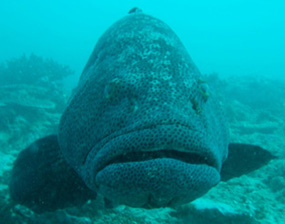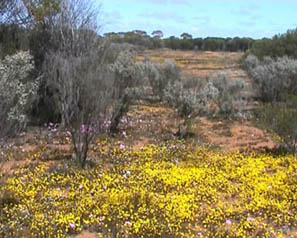Nanotechnology
Introduction

Nanotechnology is an emerging field of science and engineering that uses many different techniques to manufacture microscopic electronic and mechanical devices. It is called nanotechnology because these devices are built at the molecular level and are measured in nanometres, a unit of measurement where one nanometre is one billionth of a metre.
Nanotechnology is the science of dealing with very small particles for the purpose of making new materials or substantially altering existing ones. These materials can be entirely man-made machines or live organisms. The aim of nanotechnology is to remake both the living and the non-living. It could fabricate a machine which contains both living and synthetic components and it could go beyond genetic engineering to make entirely new living organisms.
Nanotechnology uses the ‘bottom up’ approach where materials and devices are built up atom by atom, similar to what occurs in nature itself. These nanoparticles are referred to as nanocomposers. Materials and devices can also be built using the ‘top down’ approach where they are constructed by removing existing material or atoms from larger entities. These types of nanoparticles are referred to as nanodecomposers.
There are two main types of nanostructures; fixed and free. Fixed nanostructures are those where nanoparticles are incorporated into a substance, material or device such as electrical, optical or sensor devices. Free nanostructures have nanoparticles not imbedded in a substance, but instead making up the substance themselves.
Nanoparticles include atoms and molecules found in such things as DNA, gases, chemicals and acids. These nanoparticles follow different laws of physics from larger particles
Nanotechnology provides us with the tools to work at the molecular or cell level. It may enable us to create better materials and make advances in new areas of science. However, because nanotechnology is so new it is difficult to determine what, if any, problems will arise. It is also difficult to determine whether or not the benefits of nanotechnology will outweigh the costs.
Nanotechnology could have a radical effect on a wide range of industries, each of which could have an impact upon the health and environment of humans, animals and plant life.
What you can do

Be informed and aware of the issues surrounding nanotechnology and how it may impact on you as an individual.
Be aware of the products you buy that may contain nanoparticles.
Support environmental groups such as Friends of the Earth or GeneEthics, who are actively lobbying governments for more consultation with the public and more effective regulations, and are calling for a moratorium on nanotechnology development.
Write to manufacturers asking them to ensure that nanotechnology products are safe and that all products are properly identified and labelled.
Write a letter or an email to your government to ask them to halt nanotechnology product development until the risk factors are fully understood. Ask them to regulate the industry with laws that will protect humans from the potential problems associated with nanotechnology and to insure safety standards are implemented.
Write a letter or an email to the editor of your local newspaper urging him or her to publish your concerns regarding nanotechnology.
Links
Nanotechnology - Recent and future developments
Nanotechnology - the Solutions
Search our database for the contact details of organizations that directly address Nanotechnology






